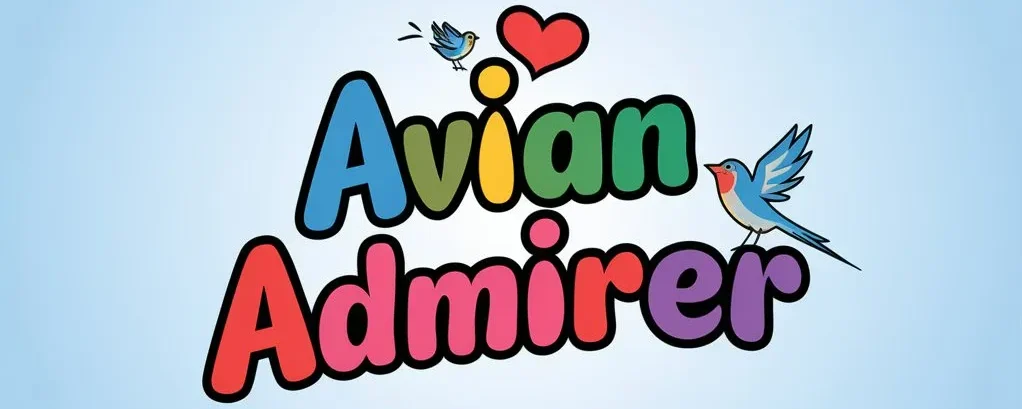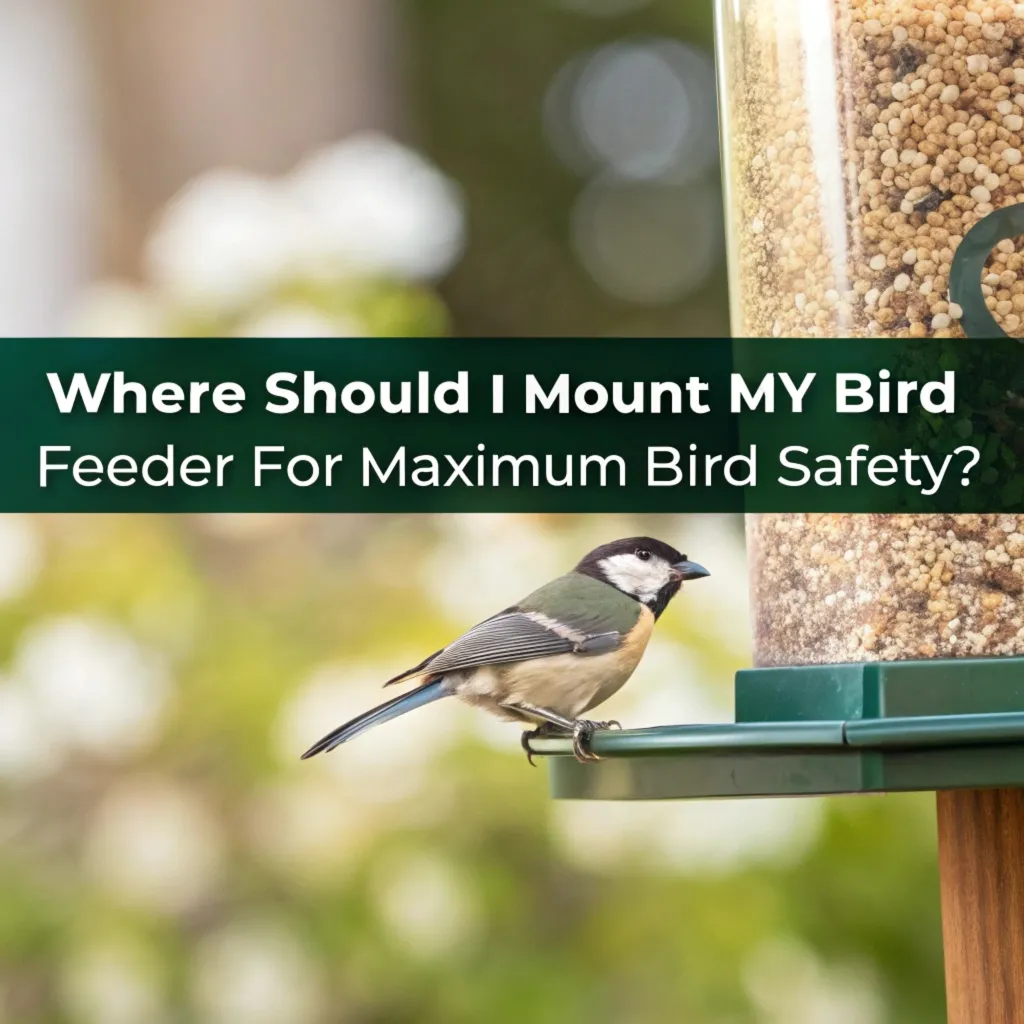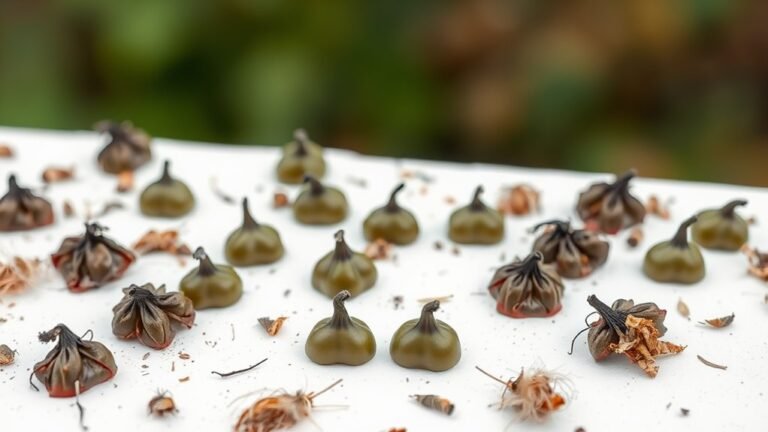Where Should I Mount My Bird Feeder for Maximum Bird Safety?
Bird feeders bring joy and life to our outdoor spaces. They attract a variety of feathered visitors, providing us with endless entertainment and a connection to nature.
However, the placement of your bird feeder is crucial. It affects not only how many birds you’ll see but also their safety. This guide will help you choose the best spot for your bird feeder.
We’ll cover key factors like distance from trees, window safety, and protection from predators. By following these tips, you’ll create a safe haven for birds in your yard. Let’s explore how to set up your bird feeder for maximum bird safety and enjoyment.
Key Takeaways
- Optimal distance: Place feeders 10 feet away from trees for safety and accessibility
- Window safety: Position feeders less than 3 feet or more than 10 meters from windows
- Shelter proximity: Locate feeders near natural shelter like trees or shrubs
- Visibility: Ensure clear sightlines for birds to spot potential threats
- Predator protection: Keep feeders away from hiding spots for cats and other predators
- Height considerations: Hang feeders high enough to deter larger animals
- Weather protection: Choose locations that offer shade and wind shelter
- Cleanliness: Regular cleaning is essential for bird health
- Food selection: Offer high-quality seeds appropriate for local bird species
- Feeder type: Use small, easy-to-clean feeders made of durable materials
- Water source: Provide a bird bath near the feeder for drinking and bathing
- Ground feeders: Use ground feeding trays for species that prefer feeding on the ground
- Multiple options: Set up various feeder types to attract different bird species
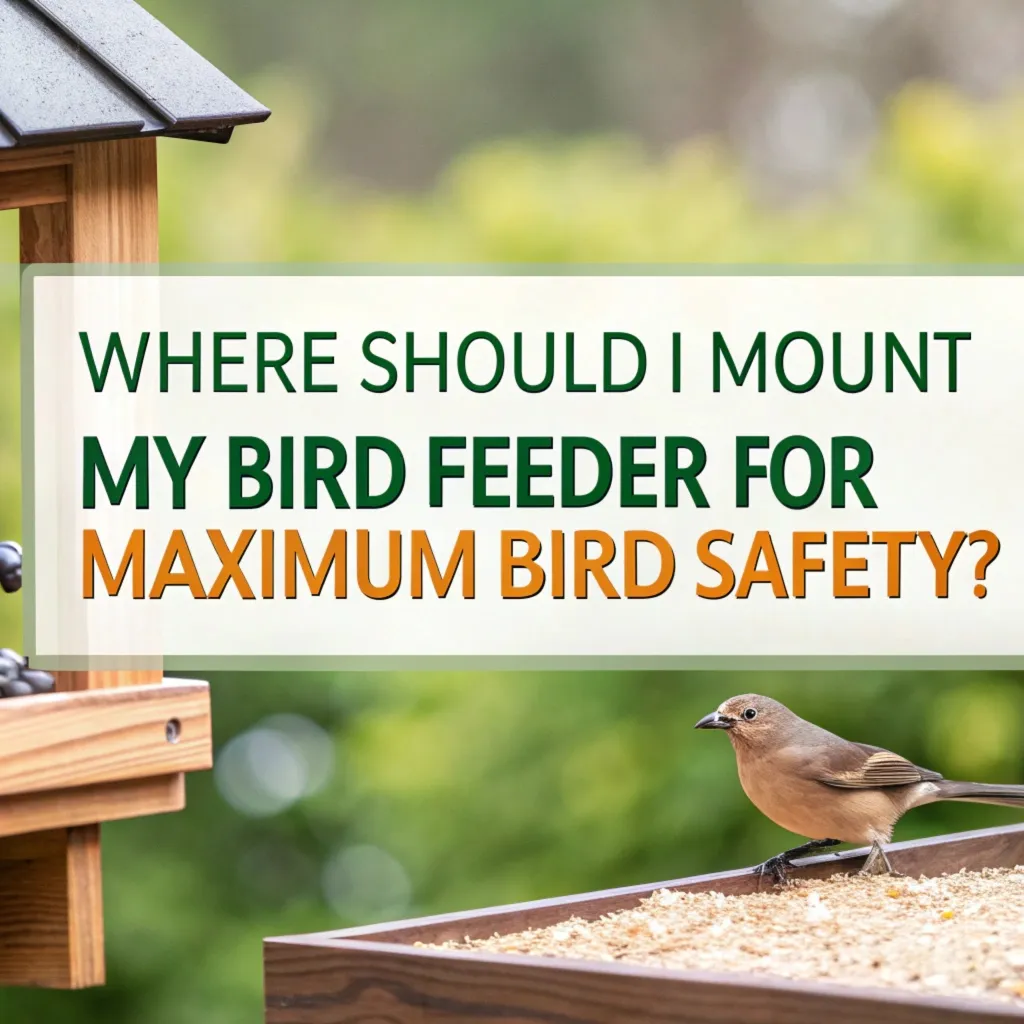
Ideal Distance from Trees and Structures
The optimal placement for bird feeders is about 10 feet away from trees or structures. This distance provides birds with quick access to shelter while keeping the feeder safe from squirrels and other climbing animals. The space allows birds to have a clear view of their surroundings, helping them spot potential threats.
Proper feeder placement is essential for creating a safe feeding environment. By positioning your feeder at the right distance, you’ll not only attract more birds but also reduce the risk of predator attacks.
Consider using a feeding station or pole system to achieve the ideal height and distance from trees and structures.
Window Safety Considerations
To reduce the risk of window collisions, place feeders either less than 3 feet or more than 10 meters away from windows.
When feeders are close to windows, birds are less likely to gain enough speed to injure themselves if they fly into the glass. For feeders further away, birds have more time to change course if they see their reflection.
Window collisions are a significant threat to birds, causing millions of deaths annually. By strategically placing your feeders, you can significantly reduce this risk.
Consider using window decals or external screens to make glass more visible to birds, further enhancing their safety around your home.
Proximity to Natural Shelter
Position your feeder near natural shelter such as trees or shrubs. This provides birds with quick escape routes and resting places between feeding sessions. Evergreen trees offer year-round protection and are particularly beneficial.
Natural shelter plays a crucial role in bird safety and comfort. By placing feeders near diverse vegetation, you create a bird-friendly habitat that offers protection from predators and harsh weather. Consider planting a variety of native plants to enhance the natural shelter options in your yard.
Visibility and Predator Protection
Ensure your feeder has a clear, unobstructed view of the surrounding area. This allows birds to easily spot approaching predators. Avoid placing feeders near dense foliage or fences where cats and other predators can hide.
Predator awareness is vital for bird survival. By providing open sightlines, you help birds stay vigilant while feeding.
Consider installing a predator baffle on your feeder pole to prevent climbing animals from reaching the food. Additionally, keeping your cats indoors can significantly reduce the threat to visiting birds.
Height and Accessibility
Hang your feeder at a height that deters larger animals like deer and bears but remains accessible for filling and cleaning. A wall bracket or feeding station can provide a stable and safe mounting option.
Proper feeder height is crucial for both bird safety and easy maintenance. Aim for a height of about 5 to 6 feet from the ground, which is ideal for most songbirds.
Use sturdy hardware and secure mounting methods to ensure your feeder remains stable in various weather conditions.
Weather Protection
Choose a location that offers some protection from harsh weather. Place the feeder in a spot that provides shade and shelter from strong winds. This helps keep the food dry and prevents the feeder from swaying excessively.
Weather considerations are essential for maintaining a safe feeding station. Look for areas with natural windbreaks, such as the lee side of buildings or dense shrubs.
Consider using weather guards or domed feeders to protect food from rain and snow, ensuring a consistent food supply for your feathered visitors.
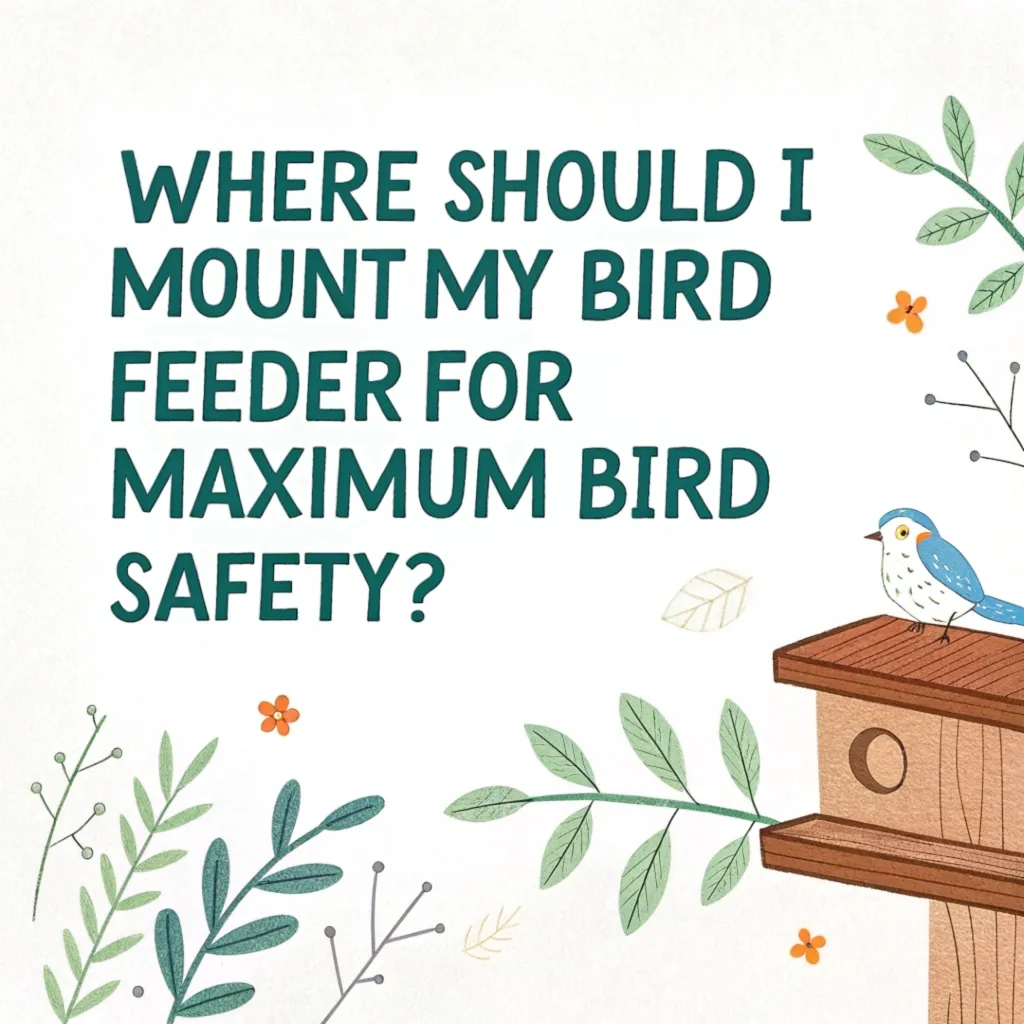
Cleanliness and Maintenance
Regular cleaning is crucial for bird health. Position your feeder in a spot that’s easily accessible for frequent cleaning and refilling. Clean the feeder at least twice a month using hot, soapy water and a mild bleach solution.
Proper sanitation is vital for preventing the spread of diseases among birds. Establish a regular cleaning schedule and stick to it.
Use a bottle brush to reach all corners of your feeder, and allow it to dry completely before refilling. Consider having multiple feeders to rotate while cleaning, ensuring a constant food source for birds.
Food Selection and Feeder Type
Offer high-quality seeds appropriate for local bird species. Avoid bargain brands with filler seeds. Use small feeders made of durable materials like plastic, steel, or glass for easy cleaning and to prevent food spoilage.
Proper nutrition is essential for attracting a diverse range of birds to your feeder. Research the preferred foods of local species and offer a variety of options.
Consider using specialized feeders for different seed types, such as tube feeders for sunflower seeds or mesh feeders for nyjer seeds. This approach will help attract a wider variety of birds to your yard.
Water Source
Place a bird bath a few feet away from your feeder. This provides birds with a place to drink and bathe while keeping the water source clean.
Fresh water is a powerful attractant for birds, often drawing in species that may not visit seed feeders. Ensure your bird bath has shallow areas for smaller birds and change the water regularly.
Consider adding a water dripper or fountain to create moving water, which is particularly attractive to birds and helps prevent mosquito breeding.
Ground Feeding Options
For ground-feeding birds like robins and blackbirds, use ground feeding trays. These can be placed on a table or the ground and should be brought in at night to deter pests.
Ground feeding options cater to a different group of bird species, increasing the diversity of visitors to your yard. Use elevated platform feeders to keep food off the damp ground and make cleanup easier.
Consider spreading a small amount of seed on the ground near your main feeders to attract ground-feeding birds to your feeding station.
Multiple Feeder Types
Set up various feeder types to attract different bird species. For example, place suet feeders near tree trunks for woodpeckers and use hanging feeders for smaller birds like sparrows and finches.
Diversifying your feeder types can significantly increase the variety of birds visiting your yard.
Experiment with different feeder styles, such as hopper feeders, tube feeders, and nectar feeders for hummingbirds. Position each feeder type in its optimal location to cater to the preferences of different bird species.
Feeder Placement for Small Spaces
If you have limited space, consider using window feeders or balcony feeders. These options allow you to enjoy bird watching even without a garden.
Small space solutions can still provide excellent bird-watching opportunities. Use suction cup window feeders or hanging planters converted into feeders for balconies.
Ensure these feeders are securely attached and easily accessible for cleaning. Even in urban environments, you can create a welcoming space for birds with thoughtful feeder placement.
Attracting Birds to New Feeders
When setting up a new feeder, be patient. It may take time for birds to discover it. To speed up the process, try sprinkling some seed on the ground near the feeder to attract attention.
Establishing a new feeding station requires patience and persistence. Use bright-colored feeders to catch birds’ attention and consider playing bird calls to attract local species.
Maintain a consistent feeding schedule to help birds recognize your yard as a reliable food source. Over time, word will spread in the bird community, and you’ll see an increase in visitors.
FAQs
How far should a bird feeder be from a tree?
A bird feeder should be placed about 10 feet away from trees. This distance provides birds with quick access to shelter while keeping the feeder safe from squirrels and other climbing animals.
Can I put a bird feeder close to my house?
Yes, you can place a bird feeder close to your house. For window safety, position the feeder either less than 3 feet or more than 10 meters away from windows.
How often should I clean my bird feeder?
Clean your bird feeder at least twice a month. Use hot, soapy water to remove debris and disinfect with a mild bleach solution.
What’s the best food to offer in my bird feeder?
The best food for bird feeders includes high-quality seeds like sunflower seeds, safflower seeds, and nyjer seeds. Avoid bargain brands with filler seeds.
How can I attract birds to a new feeder?
To attract birds to a new feeder, try sprinkling some seed on the ground near the feeder. Be patient, as it may take time for birds to discover the new food source.

Ava is a bird enthusiast and nature lover who has spent countless hours observing and learning about the fascinating world of birds. With a passion for sharing her knowledge and inspiring others to appreciate the beauty of birds, Ava writes about her experiences and insights on avianadmirer.com.
